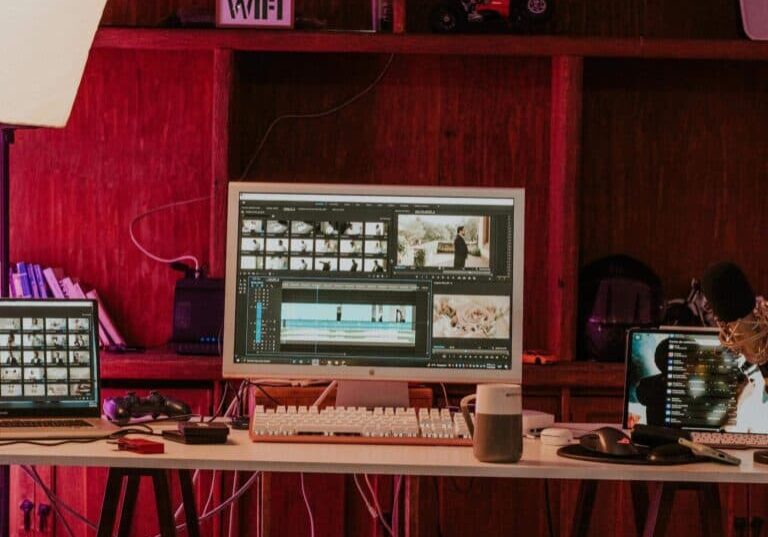Everything You Need to Know About Taking Minutes of a Meeting

Meeting minutes are essential for organizations. This tool ensures that employees, teams and attendees are on the same page after meetings.
Meeting minutes capture a written record of everything that occurs in a meeting so everyone — whether they attended the meeting or not — can stay in the loop. Companies might use a designated minute taker to keep such records, but this can be a tricky process.
Fortunately, learning some top tips and best practices when it comes to taking minutes can help make the process more efficient.
Do you need meeting minutes?
Taking meeting minutes can be a laborious and long process. It’s perfectly natural to wonder whether all the hard work and attention to detail are worth the effort. Isn’t it enough to take some brief notes for your own personal use? Do you really need to take minutes?
Meeting minutes are a historical documents that record key discussion points, decisions and actions. Unlike a transcript, which is a word-for-word record, meeting minutes deliver an accurate, concise, and impartial account of events. On the other hand, personal notes tend to focus on the parts of the agenda and actions that impact the individual. Therefore, personal meeting notes and meeting minutes are not comparable. Personal notes rarely contain either the required detail or sheer scope necessary to facilitate the function of meeting minutes.
Meeting minutes serve as a reference point for making key strategic decisions at many levels within the organization. They are instrumental in allowing businesses to chart their ongoing trajectories and track their progress. For some organizations in certain locations, meeting minutes are actually a legal requirement.
What does taking meeting minutes require?
As we’ve established, meeting minutes are an extremely important part of a business’s strategic evolution. As such, the task of taking them can be difficult and demanding. Aside from the magnitude of their importance, it can be difficult for anyone to keep up with meeting minutes.
Taking minutes requires a certain set of skills. Even to seasoned administrators may face challenges creating a complete record. Let’s take a look at what skills a person needs to take meeting minutes effectively:
Outstanding multitasking skills
An in-house meeting minutes taker is not a stenographer. They don’t just document everything participants say at the meeting. They’re often also usually active participants and need to be present within the conversation. This multitasking is not something that everyone can manage.
Focus
It’s easy for the mind to wander, especially in long and (let’s be honest) boring meetings. However, minute takers need to be constantly present and in the moment. Allow yourself to be distracted, even momentarily, and an important statement or proposition might escape your notice.
An ear for detail
Did she just say “insurance” or “assurance”? Did we just agree that the next meeting will take place on the 22nd of May or March? Meetings can move at a fast pace. Participants don’t always have time to repeat themselves or offer clarification to other participants or minute takers.
When taking minutes you need an ear for detail. Homophones or similar-sounding words and dates or numbers can make this particularly challenging. You need to have faith in your ability to record the details with pinpoint accuracy, even with these complicating factors.
How transcription services can help
Taking minutes is a hard process that requires great attention to detail. A better practice is often to record your meetings and then get the minutes professionally transcribed by a dedicated transcription service.
Transcription services save time and effort on the part of administrative staff. They save resources and guarantee quality so businesses can ensure their meeting minutes support their teams. Service providers simplify an arduous task, meaning all attendees can fully focus and be present within the meeting.
However, if you were to take minutes yourself, how would you go about it?
The process of taking meeting minutes
When it comes to taking minutes, is there a prescribed way to do it or are minute takers free to decide which methodology works best for them?
While some businesses may have a set way of taking minutes, generally minute takers are free to follow the method that suits them (as it guarantees accuracy).
Know how you’ll record the minutes
Writing longhand may be too cumbersome and time-consuming for keeping up with the flow of the conversation. This is why many minute takers are proficient in shorthand. If you don’t know shorthand (and don’t have the time to learn), it may be worth bringing a laptop into the meeting room and typing notes as you go.
Typing your notes
In order to be present in the meeting while also recording the conversation, the best strategy is to prioritize what you choose to document, so you can take notes as comprehensively as possible which can be fleshed out later. Important information might include:
- Dates and times
- Names and job titles of attendees
- Actions taken or agreed
- Steps or actions proposed
- Voting outcomes
- Motions taken (or rejected)
- New business
If you feel that you’ve missed something important, don’t be afraid to speak up and ask for clarification. While it may disrupt the meeting slightly, it’s preferable to losing vital details.
Finally, remember that while your notes should be comprehensive, you can’t possibly log everything.
Use a minutes template
Converting your notes into structured minutes may seem like a daunting task, especially if you’re doing it for the first time. It may be pertinent to use a minutes template which will provide an initial structure for you to add your notes to after the meeting. You can find plenty of minutes templates online or collaborate with other members of your team to create one that is hyper-relevant to your business.
Plan ahead
Make sure you have the details of the meeting ahead of time, including the agenda and list of attendees. This information will form part of the minutes and so can be prepared before the meeting begins. It’s also good practice to provide an agenda in advance so everyone has the chance to adequately prepare to make a valuable contribution. If there’s no agenda, is the meeting necessary?
Converting your notes into minutes
Now it’s simply a matter of adding the raw data in your notes to your minutes template. It’s best to do this as quickly as possible so that the meeting and its contents are still fresh in your mind. Make sure that your meeting minutes are concise, comprehensive and easy to follow.
Ensure that your minutes are neat and tidy by using the same tense consistently, reducing your minutes to just the facts and omitting personal observations or anything similarly subjective. If you need to refer to other documents or previous minutes, don’t try and summarize them in your minutes. This can undermine their clarity. Instead, attach them as an appendix.
Guarantee accurate meeting minutes
As you can see, while minute taking is extremely important, it can be a time-consuming and meticulous process with a huge margin for error. Taking minutes can be stressful, creating an unwelcome distraction from tasks that could be a better use of your time.
Professional transcription services can lighten your team’s administrative load while offering you complete accuracy and prevent the loss of anything salient. Simply make an audio recording of your meeting and let the transcription service know how soon you need the results.
Transcription services can make the process of minute taking much easier for you. Reach out to learn how Verbit can help you save time, effort and resources while ensuring your business gets high-quality minutes, hassle-free.












